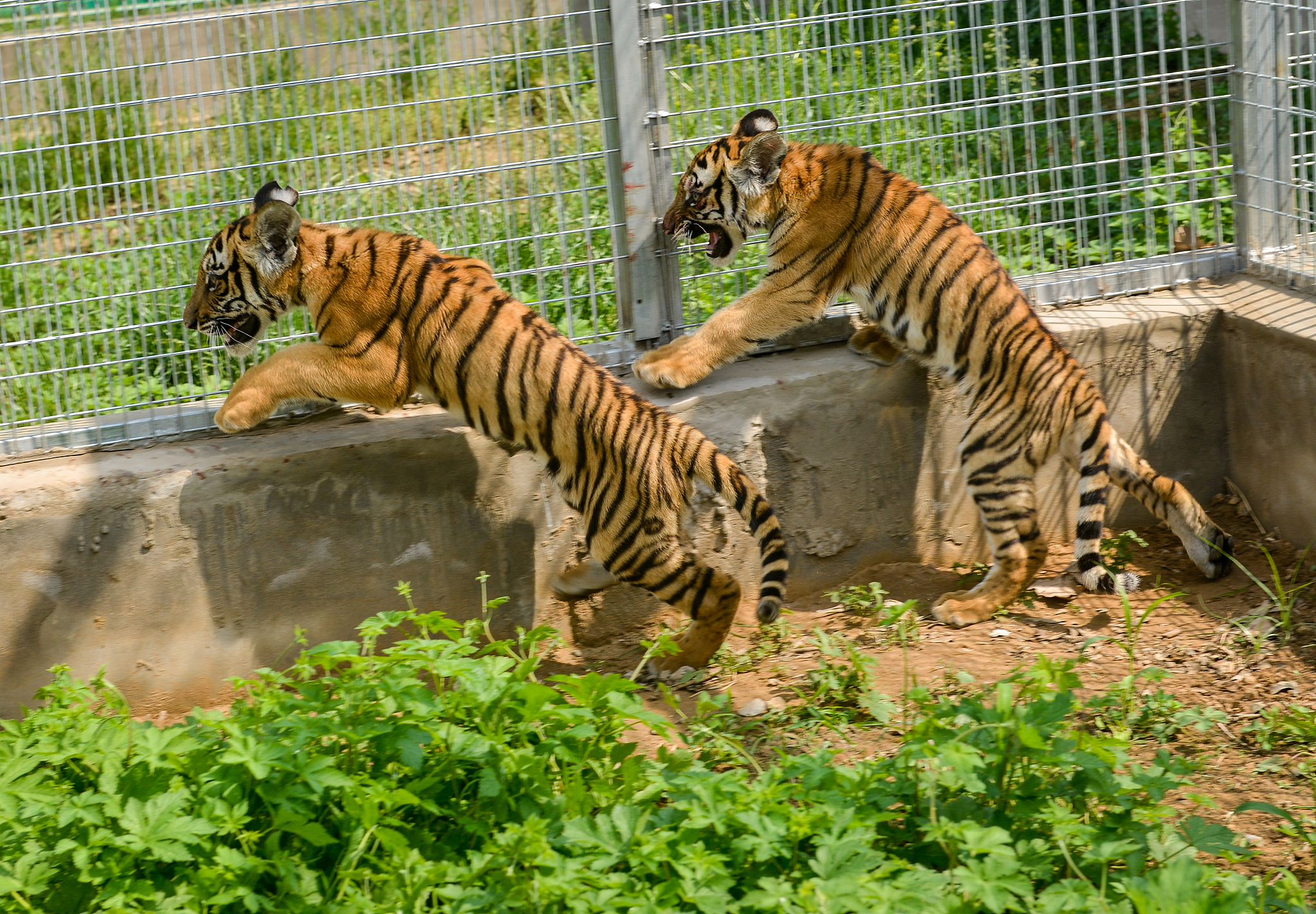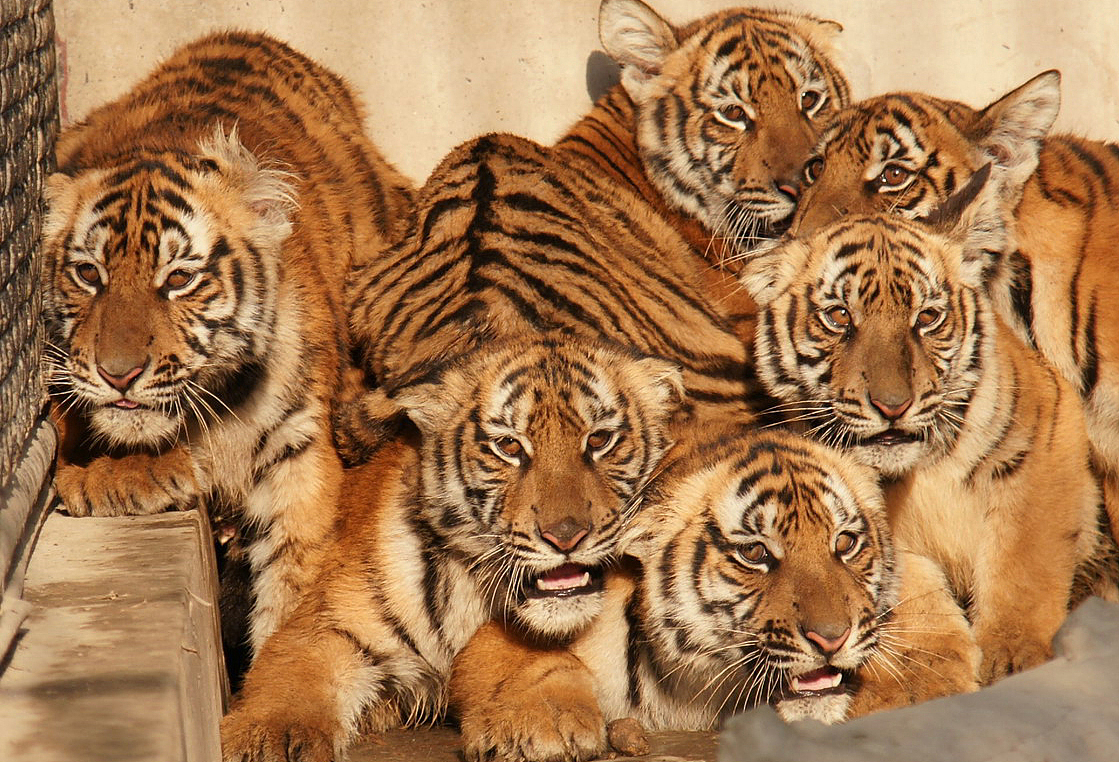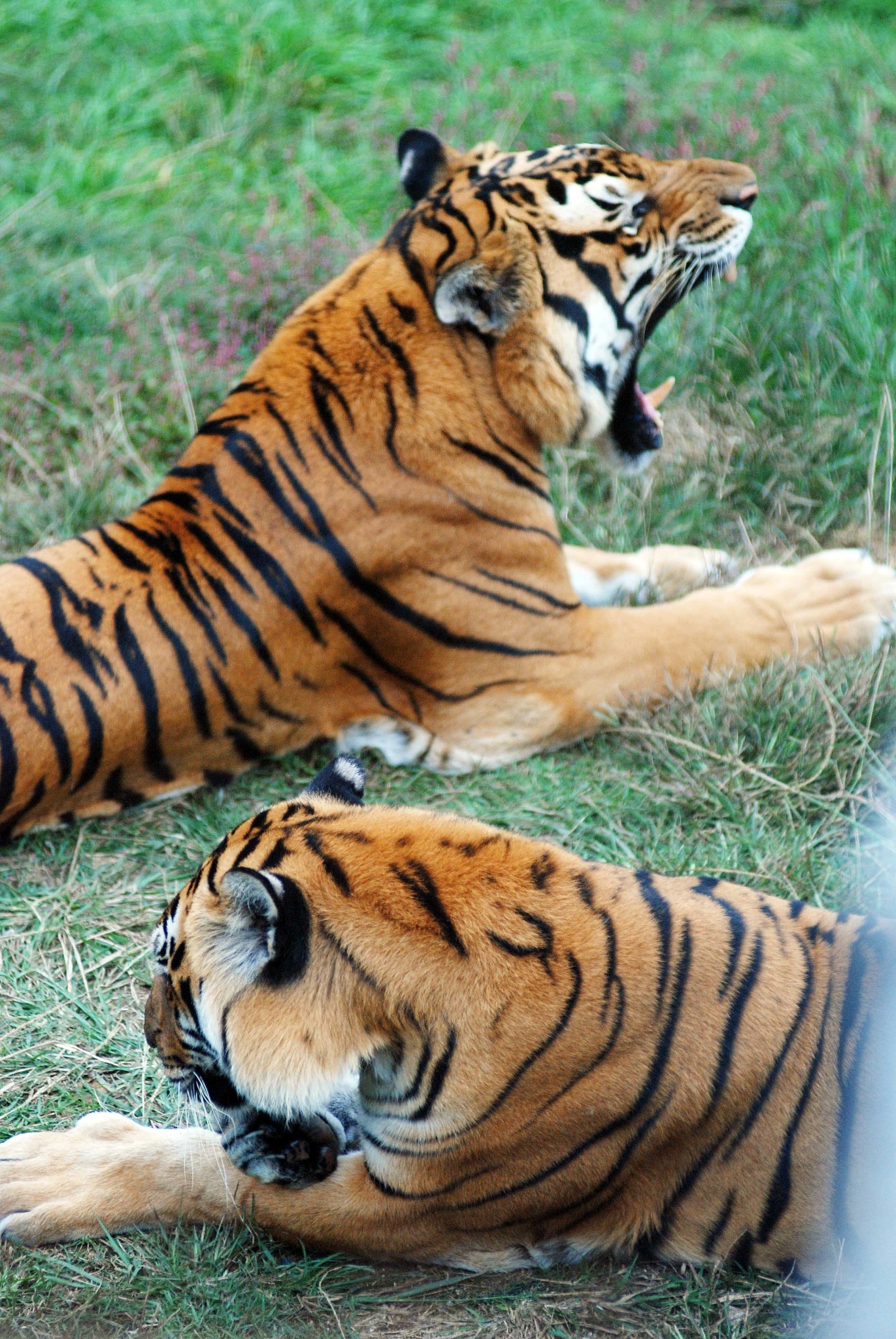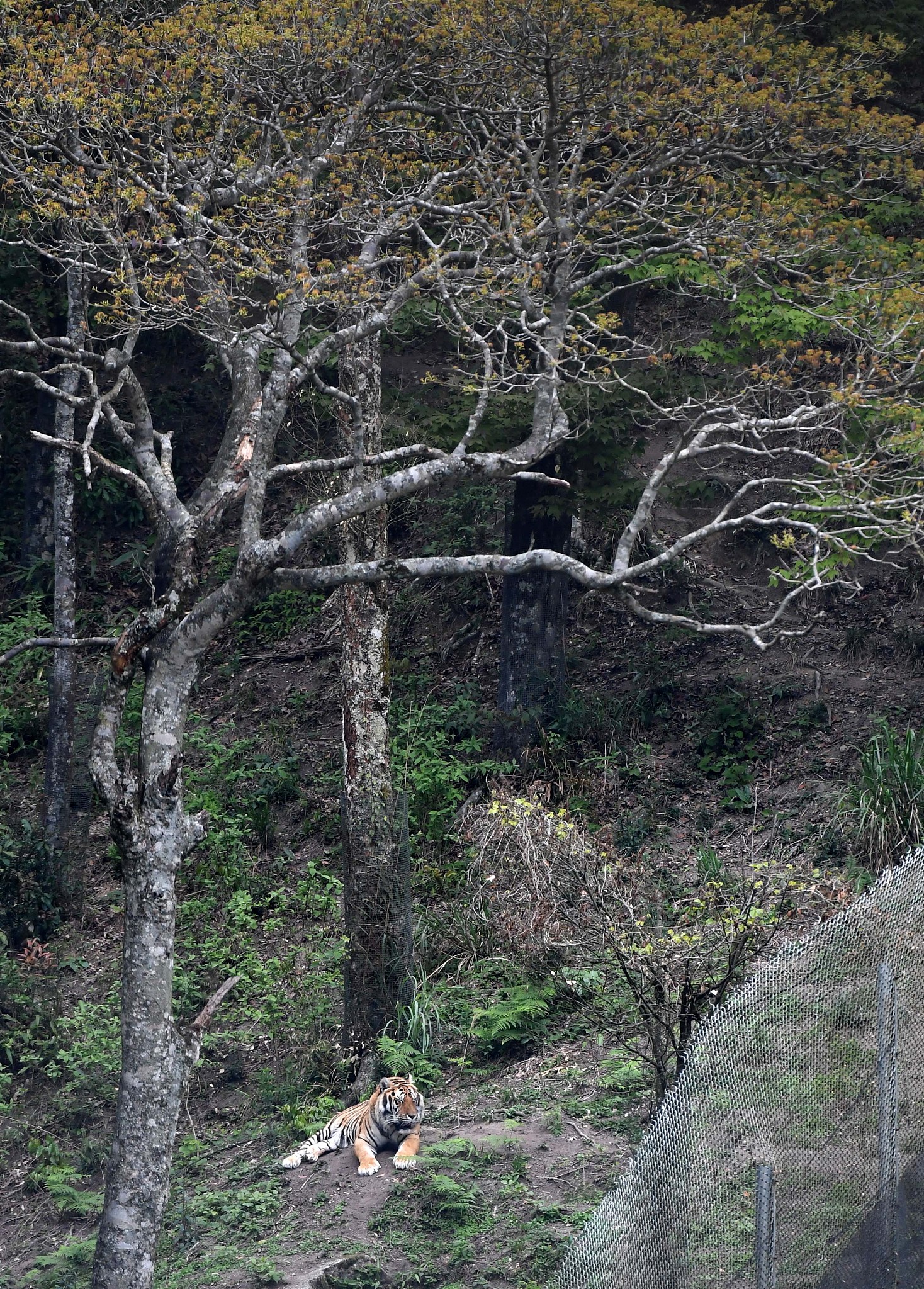Today, there are more tigers in captivity than in the wild. Compared to their cousin's Siberian tigers, who are fortunate to have the vast forest in the Northeast China Tiger and Leopard National Park to roam about, most South China tigers are confined to cages in zoos with limited space. They seem to have lost their instincts and slack off in front of visitors as if they think they can never return to the wild.
Some conservationists haven't given up the hope of releasing South China tigers into the wild. Their primary task is to find a suitable habitat for these fierce beasts, not only for providing training but also for their release.

Two South China tigers at the Wangcheng Zoo in central China's Henan Province. /CFP
Two South China tigers at the Wangcheng Zoo in central China's Henan Province. /CFP
The most notable and controversial project was launched by Save China's Tigers (SCT), an international charity founded by a Chinese woman Quan Li and her U.S. banker husband, Stuart Bray. Their basic idea was to send captive-bred South China tigers to South Africa to provide survival training in the wild. They planned to send the second or third generation with the ability to prey in the wild back to China, their original habitat.
In 2002, SCT co-initiated the project to save South China tigers with the State Forestry Administration, which was known as the National Forestry and Grassland Administration now. One year later, two South China tiger cubs named "Guotai" and "Xiwang" left the Shanghai Zoo and embarked on a journey to South Africa. Another three tiger cubs joined them there in 2004 and 2007.

Six South China tigers born in 2019 at Shanghai Zoo. /CFP
Six South China tigers born in 2019 at Shanghai Zoo. /CFP
By 2016, the number of South China tigers living at the Laohu Valley Reserve in South Africa swelled to 19. The big cats developed their instinct to hunt and breed like their ancestors in this 330 square kilometers area of land. However, it is uncertain whether these tigers will return to their homeland as Quan Li and Stuart Bray were caught in a bitter divorce case, and both of them were no longer directors of SCT or played any role in the charity.
Conservationists criticized the project for lacking scientific credentials and becoming a special fund for the couple's personal expenditure. Experts from several conservation organizations, including the International Union for Conservation of Nature (IUCN) and the World Wildlife Fund (WWF), warned that it was risky and expensive to train tigers in African grasslands, which were entirely different from their original habitat in the dense forest of southern China. Besides, tigers also faced risks or posed threats to native animals.

Two South China tigers at Meihua Mountains National Nature Reserve in east China's Fujian Province. /CFP
Two South China tigers at Meihua Mountains National Nature Reserve in east China's Fujian Province. /CFP
Back at home, an expert team of SCT from South Africa worked with the State Forestry Administration since 2001 to find ideal habitats for South China tigers across four provinces in China. In 2004, Hunan and Jiangxi provinces were recommended for re-introducing these endangered tigers.
In order to release the captive South China tigers, the forest should have a vast land with enough prey to help them survive. The site selection should also avoid potential conflicts between tigers and humans.
In 2010, the State Forestry Administration selected three nature reserves as trial zones to release South China tigers: Houhe National Nature Reserve in central China's Hubei Province, Matou Mountain in east China's Jiangxi Province and Huping Mountain in central China's Hunan Province. The Hupingshan-Houhe National Nature Reserve complex was regarded as the largest and possibly the most suitable location to support released tigers.

One lonely South China tiger in China Tiger Park in east China's Fujian Province. /CFP
One lonely South China tiger in China Tiger Park in east China's Fujian Province. /CFP
Besides, the previous breeding center of South China tigers at Meihua Mountains National Nature Reserve in east China's Fujian Province added another role in 2010 to do wild trainings for captive-bred South China tigers. The reserve with a forest coverage rate of 89 percent is a perfect habitat for these big cats.
Over the years, the bottleneck of re-wilding the South China tigers has always been how much land can we give back to these tigers rather than how many of them can we captive breed. Maybe one day, we can see them roam again in the forest in southern China just like how we watch lions in the African savanna.
About the 'Lost then Found' series:
Many species on Earth went extinct because of environmental changes, evolutionary problems, habitat loss or human activity. The disappearance is ongoing, but some species are lucky to have survived, thanks to conservation efforts. In this series, CGTN will guide you through the journey of saving these creatures from extinction.
For more:
From 6 to 200: When the tiger came down the mountain
(Cover image designed by CGTN's Li Wenyi.)
(If you want to contribute and have specific expertise, please contact us at nature@cgtn.com.)

